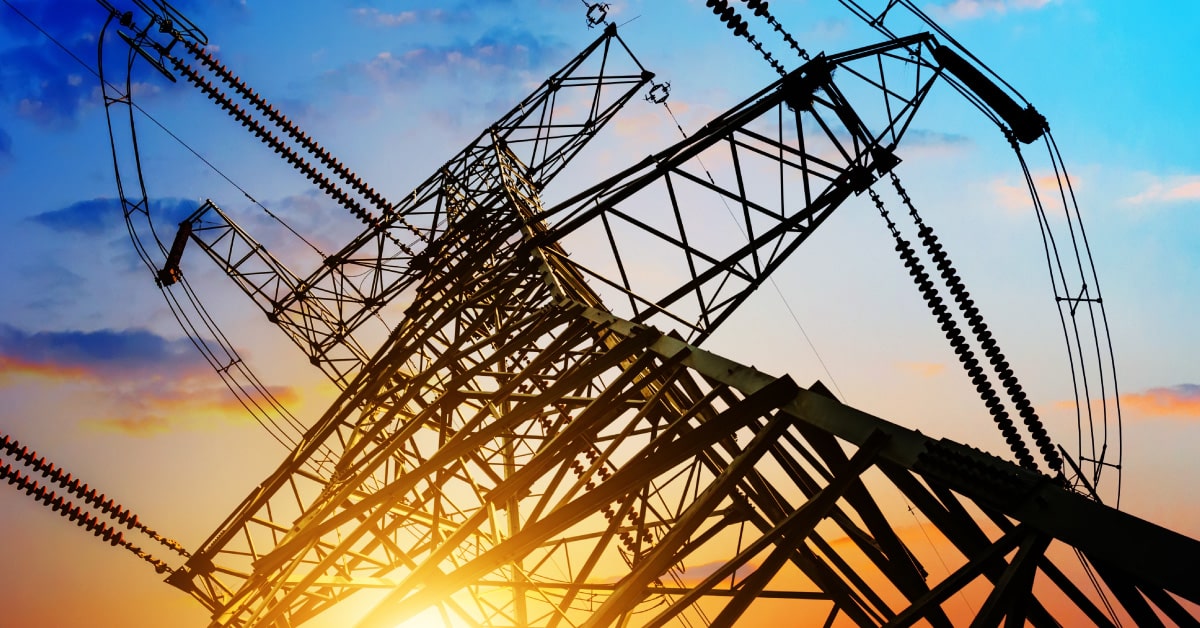Electrical Grid and Power Grid: Frequently Asked Questions - NEC Coop
May 17, 2023 — Resources

Electricity towers come in different shapes and sizes.
Most people’s understanding of the electrical grid is limited to these towers as the source of electricity for our houses. Only during periods of blackouts and power outages do we pay more attention to the power lines and distribution system.
Nevertheless, these high-voltage transmission lines provide a glimpse into far more than just our routine power supply. They serve as a way for us to understand how we as a society consume energy and how we manage power production.
Is a Power Grid and Electrical Grid the Same?
The massive network that supplies businesses and homes with electricity has many names. The electrical grid, power grid, national grid, or simply the “grid” all mean the same thing.
This electrical grid network comprises towers, power lines, power plants, transformers, sustainable energy sources, and substations. The electrical grid also includes utility companies, power generation, and many other components.
In this article, we will use the terms electrical grid and power grid interchangeably to refer to the same power system that delivers electricity to residences and commercial establishments.
What is an Electrical Grid?
The primary purpose of the electrical grid is to transmit, generate, and distribute electricity. The grid is responsible for balancing the demand for power and power supply, enabling consumers to use electricity generated from a variety of energy sources.
The electrical grid is an intricate power system with lots of components. It enables electric utilities to provide real-time data on power demands, monitor and bill customers for their electricity usage, and more.
How Does an Electrical Grid Work?
Let’s examine each of the three sections of the power grid to understand how the electrical grid operates.
The electricity generation phase initiates the process, with various power plants and sustainable energy sources producing electrical energy. According to the U.S. Energy Information Administration (EIA), in 2020, about 61% of the country’s electricity came from fossil fuels, with nuclear and renewable sources contributing 20% each. Fossil fuel power plants, including those using coal, natural gas, or petroleum, emit greenhouse gases into the atmosphere.
Electricity generation plants are frequently located far from the point of use and residential areas. Some hydropower from reservoirs must be transported over 100 miles to reach cities.
To overcome this issue, grid operators use transmission. The power source transmits electricity to a transmission station, which uses a transformer to raise the electricity’s voltage, allowing it to travel further. This process enables electricity to travel considerable distances from its source.
Next come towers and power lines. They are responsible for transmitting electricity to distribution substations for the final stage of delivery. Across the United States, there are hundreds of thousands of miles of high-voltage and low-voltage power lines spanning the country.
The substations then “step-down” the high-voltage electricity to lower and safer voltages that households and businesses can use. Communities may have multiple substations to distribute electricity to households and businesses.
Why Does Texas Have a Separate Electric Grid?
Since 1999, Texas has implemented energy deregulation, which allows the majority of Texans to choose their preferred electricity provider and pricing plan from a pool of over 120 electricity companies known as Retail Electric Providers. Those who live in regulated areas have no option but to rely on local utility companies for their energy supply.
The primary factor for the existence of a separate grid in Texas is attributed more to politics than logistical or state boundary considerations. By confining the grid within state lines, it is exempt from federal laws, granting it a degree of independence.
How Do I Find Out What Power Grid I Am On?
First, contact your utility provider to determine the power grid you are connected to. They should be able to provide you with this information.
Alternatively, the website of the Federal Energy Regulatory Commission features a helpful map that can be used as a reference. Areas on the map that are colored indicate regions that sell electricity in the wholesale market, which is overseen by a regional transmission organization (RTO) or an independent system operator (ISO).
Once you have identified your power grid, you can examine the combination of energy sources that your utility uses to generate electricity.
What Happens if an Electric Grid Goes Down?
Grid failures can occur due to high demand, severe weather conditions, a cyber-attack, or planned outages for maintenance. If a power grid goes down, notify your local utility, which will begin the process of identifying affected areas and determining the cause.
In the event that power is not restored promptly, keep the following tips in mind:
- If you have a generator, start it up.
- Keep some extra batteries and a flashlight in an easily accessible location.
- Store some water in bottles, bathtubs, sinks, and pans as water supplies may fail.
- Paper plates and garbage bags can be used to minimize dirty dishes (and dispose of spoiled food if necessary).
- Keep the doors of your fridge and freezer closed as much as possible to maintain the interior temperature.
- Have a backup camping stove for cooking.
- Ensure that you have adequate supplies of food and medicine.
- Keep enough cash on hand at all times as credit and debit cards may not work.
The electrical grid enables our modern way of life. Despite its significance in our daily routines, many people lack knowledge about its functioning. We hope that through this article, we are able to shed light on the mysteries surrounding the electricity system by providing an explanation of how the power grid operates.
Sources:
“How Does the U.S. Power Grid Work?” Council on Foreign Relations, https://www.cfr.org/backgrounder/how-does-us-power-grid-work
“The Power Grid,” Generac, https://www.generac.com/be-prepared/power-outages/power-grids
“What is U.S. electricity generation by energy source?” U.S. Energy Information Administration, https://www.eia.gov/tools/faqs/faq.php?id=427&t=3
“Electrical grid,” Energy Education, https://energyeducation.ca/encyclopedia/Electrical_grid
“Alphabetical Directory of Retail Electric Providers,” Public Utility Commission of Texas, https://www.puc.texas.gov/industry/electric/directories/rep/alpha_rep.aspx
Voted #1 Electric Provider
We were recently voted the #1 Electricity Provider by the Corpus Christi Caller-Times’ Best of the Best Awards for the 7th year running!
Benefits of Membership
As a member of our co-op, you’ll enjoy the following benefits:
- You’ll get a share of our profits.
- You won’t be locked into a long-term contract.
- You’ll get a simple, competitive rate with no surprise fees or markups.
- You can get a $50 bill credit for every new member you refer.

